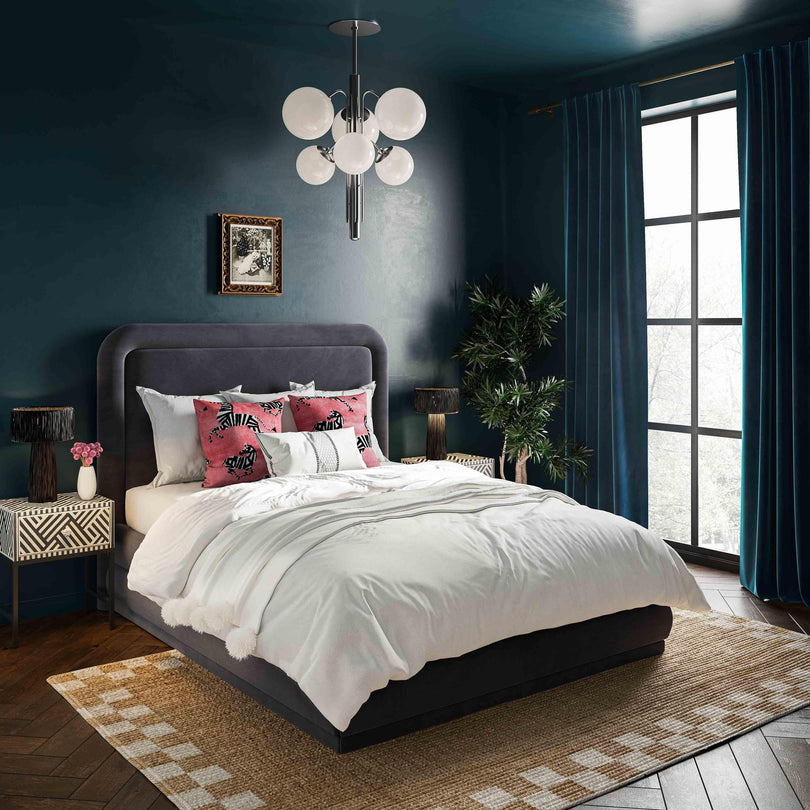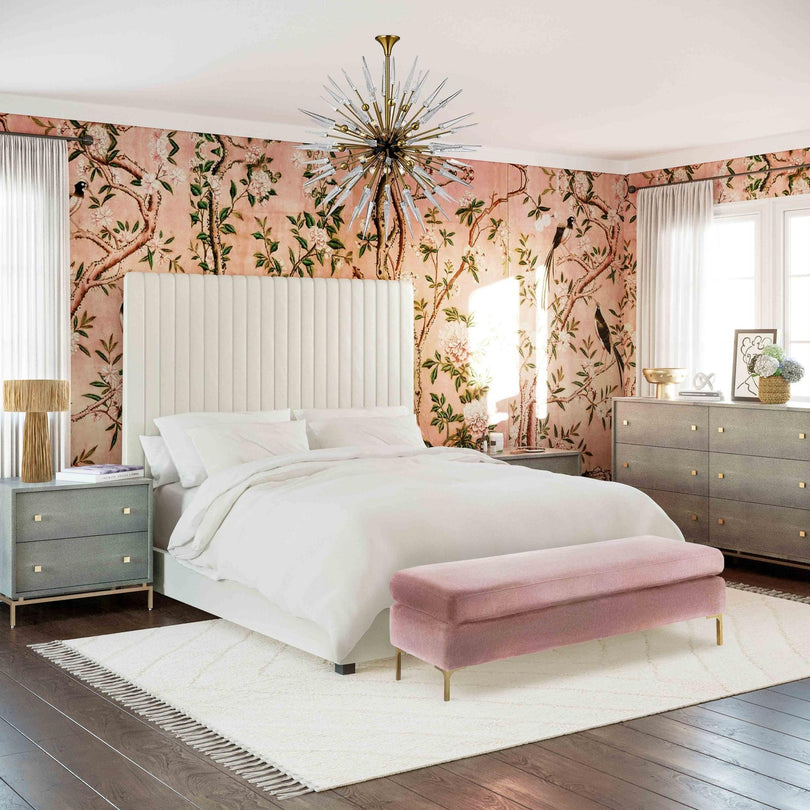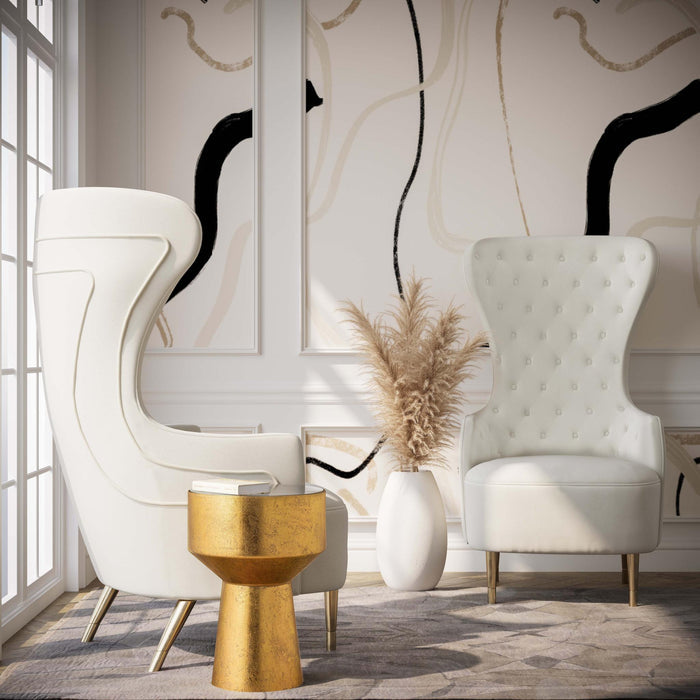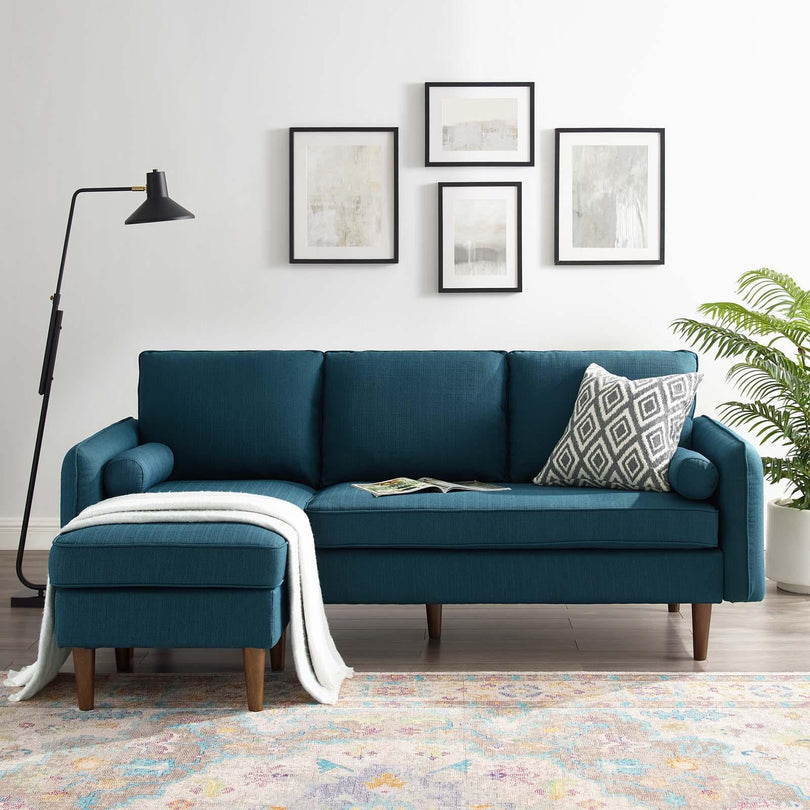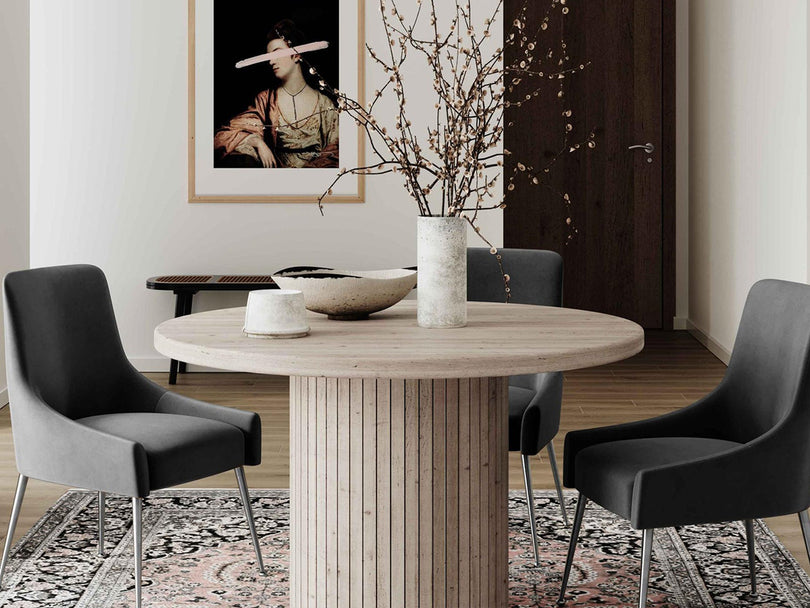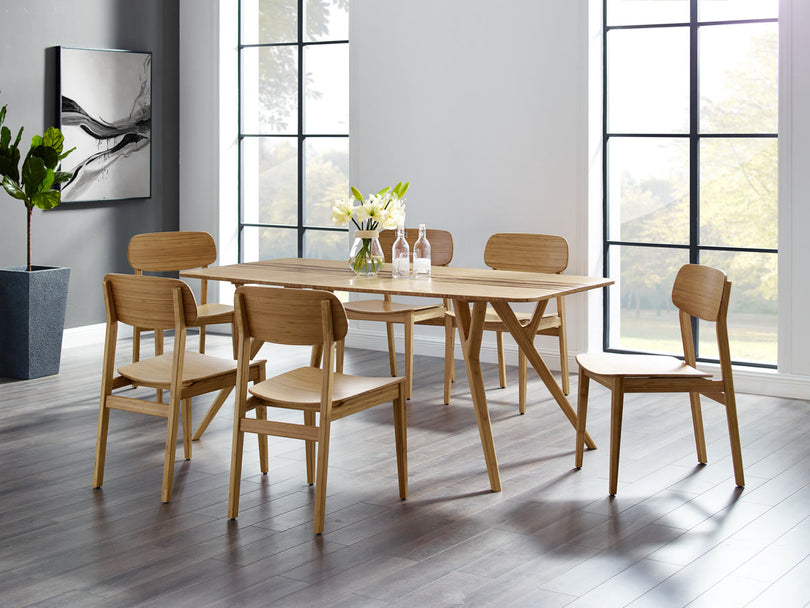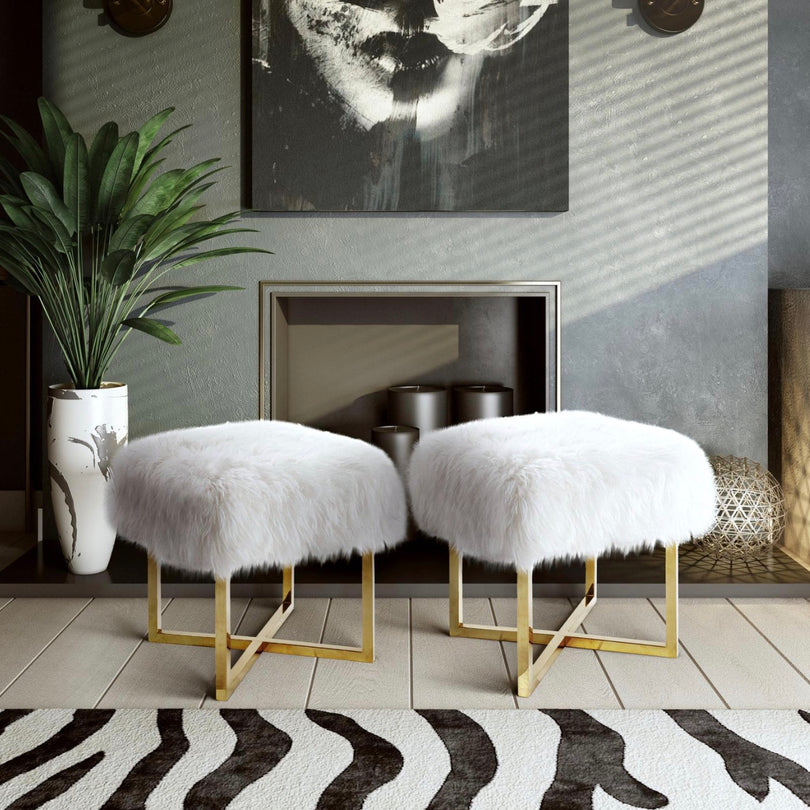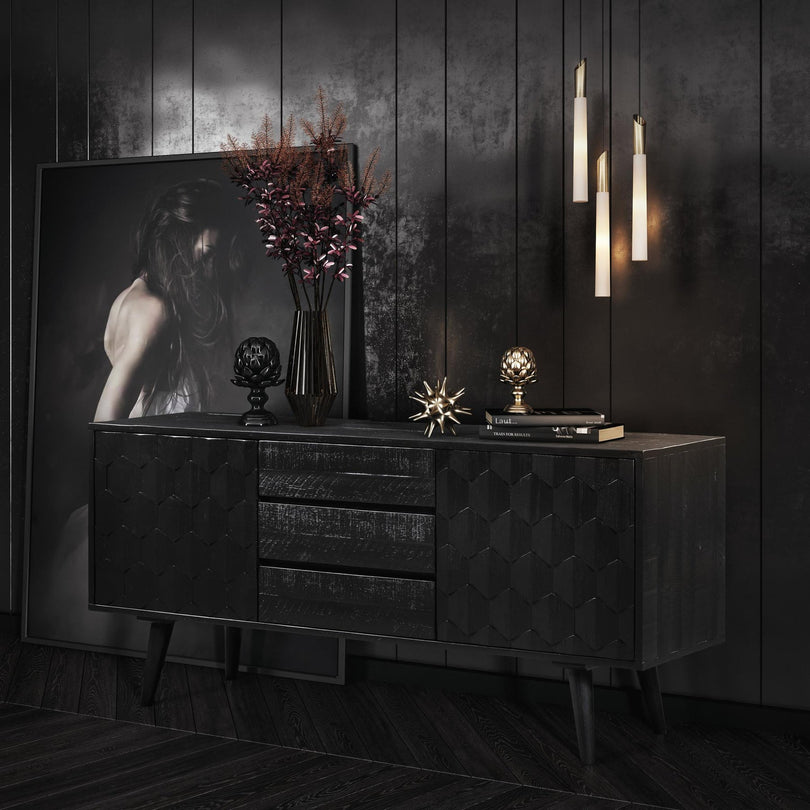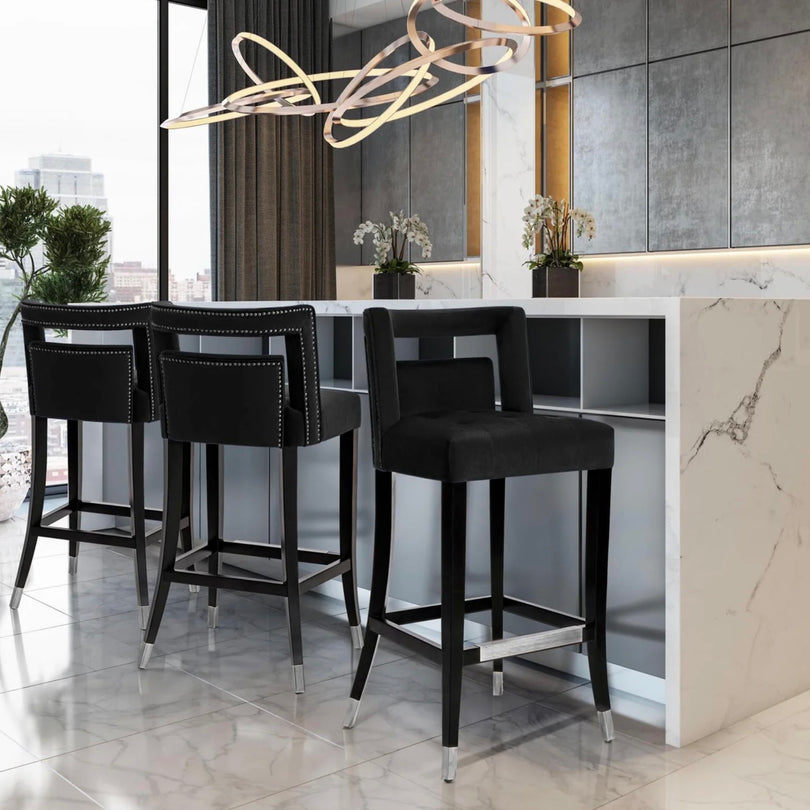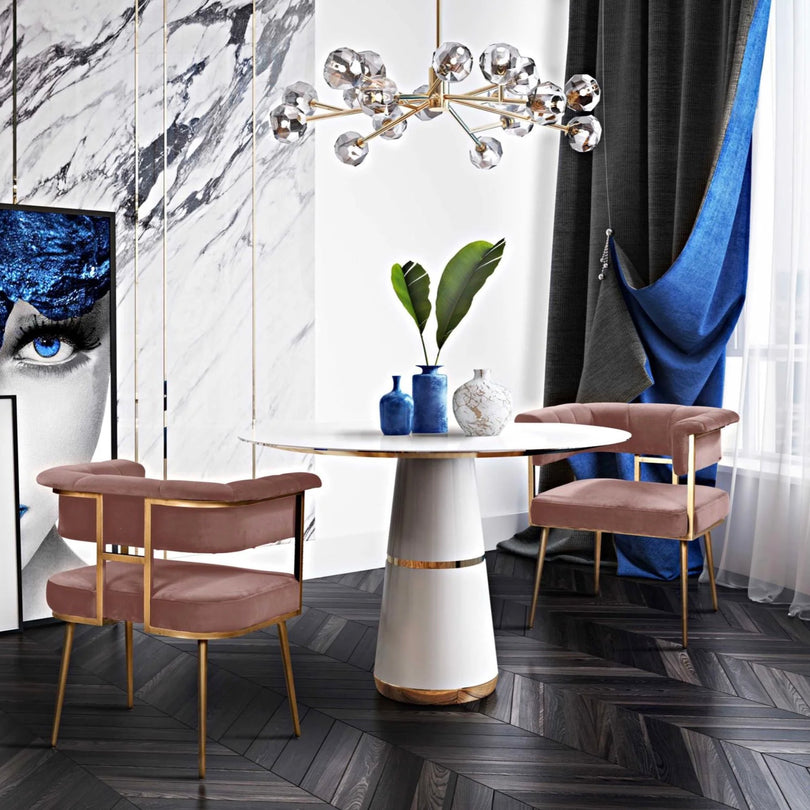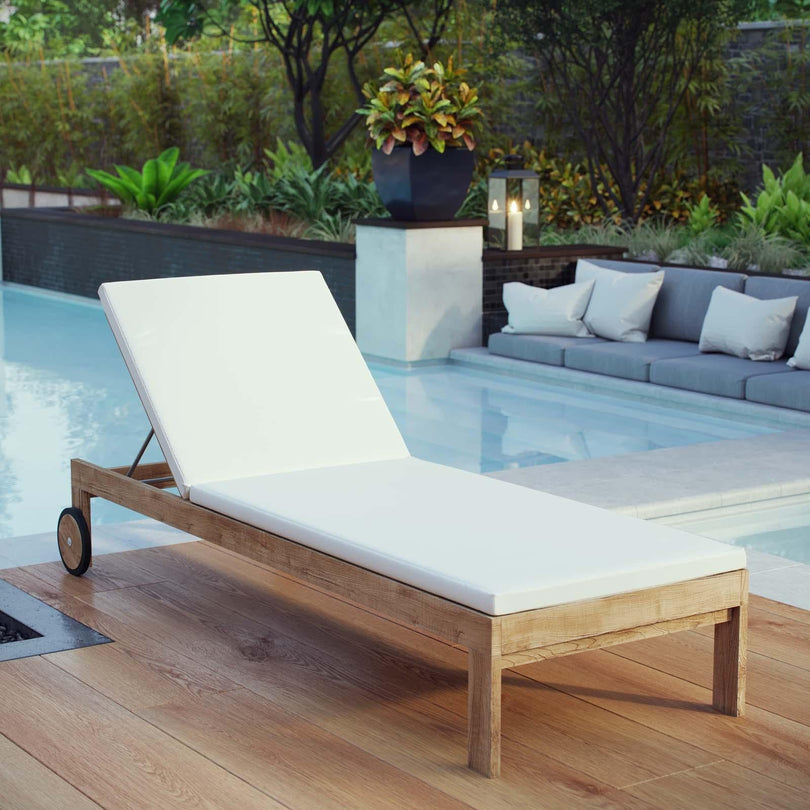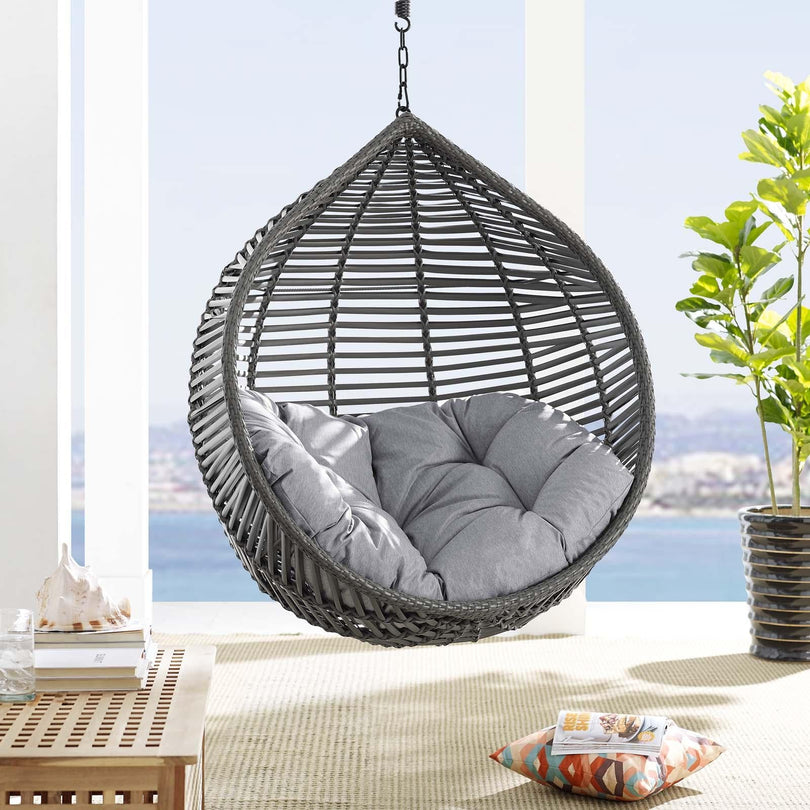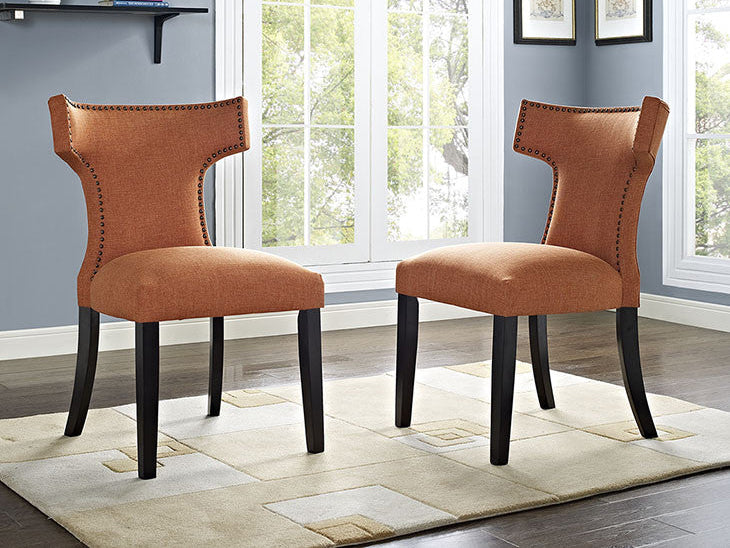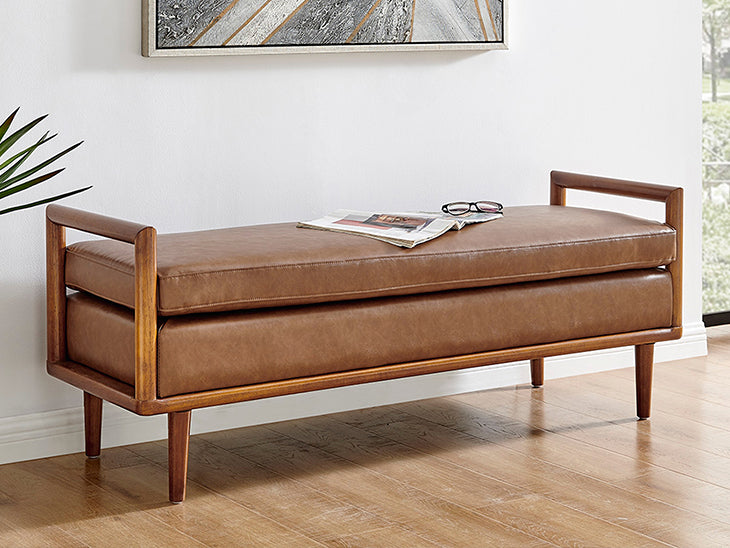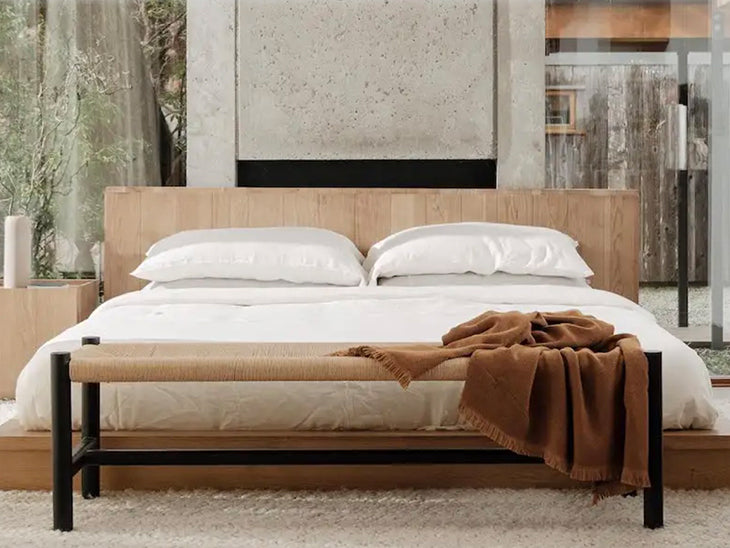Diving into the world of interior design can be an overwhelming endeavour, especially with the variety of styles and themes to choose from. However, one design trend that has set a strong foothold in this vast sea of options is minimalism. The minimalist aesthetic, characterized by clean lines, uncluttered spaces, and a pared-back colour palette, has gained significant traction in recent years, becoming increasingly popular among homeowners, renters, and interior design enthusiasts alike.
With the start of the new year, now would be the perfect opportunity to refresh your space, and what could be more appealing than a minimalist facelift? Not only is this design trend stylish and modern, it's also often less expensive than more elaborate styles, owing to its "less is more" philosophy.
In the forthcoming sections, this article will delve into the basics of minimalist design, its history, and its influence on modern-day furniture design. We’ll also examine trending minimalist furniture styles for 2024, guide you through an array of budget-friendly minimalist furniture options, and offer tips on how to select the best minimalist pieces for your space.
Whether you're considering a full-scale home renovation or simply seeking to incorporate a few minimalist elements into your existing decor, this comprehensive guide to minimalism is the perfect starting point for your design journey. Buckle up, and let's simplify your space together!
Understanding Minimalist Design
Have you ever walked into a room and marveled at the sense of calm it invoked within you? There's a high probability that you were standing in a space designed under the principles of minimalism. Minimalism, a much-embraced concept in modern aesthetics, can be described as an art movement that opts simplicity over complexity, highlighting the beauty of functional elements. This piece will shed light on the basics of minimalism, its intriguing history, and how it has richly influenced furniture design.
Basics of Minimalism
Firstly, understanding minimalism requires appreciating simplicity. Minimalism is about stripping down design to its fundamental features. It's about adopting the "less is more" philosophy and understanding that clutter isn't just physical, but visual too. Here’s what minimalism signifies in design:
- Less is More: Rather than filling a space with numerous items, it advocates using fewer elements, focusing on their function and beauty.
- Simplicity: Minimalist design values simplicity and avoids superfluous elements. It’s about clean lines, geometric forms, and pared back structure.
- Functional Elements: In minimalism, every item has a purpose and often serves multiple roles. It eliminates unnecessary items, highlighting functionality and effective space usage.
- Neutral Color Palette: Minimalist design often employs a neutral or monochromatic color scheme, which adds to the clean and serene ambiance.
History of Minimalist Design
Tracing back to its roots, the minimalist design movement started to gain prominence post World War II, mainly in Western art and design. It was seen as a reaction to the excess and clutter of the previous styles, focusing instead on the beauty of simplicity and functionality. Its influence is visible in various artistic disciplines like architecture, painting, sculpture, and indeed, furniture design. Minimalism owes much of its principles to traditional Japanese Zen philosophy, which embodies simplicity, harmony, and tranquility.
Influence on Furniture Design
Minimalism's impact on furniture design has been immeasurable. Minimalist furniture pieces are lauded for their simplicity, subtlety, and elegance. They do not just serve a purpose but also contribute exquisitely to the overall design of the room.
- Purposeful Design: Minimalist furniture items are designed with functionality at the forefront. Their design serves a purpose, and they avoid ornamental or superfluous features.
- Simplistic Forms: Crafted with clean lines and simplistic forms, minimalist furniture exudes an understated beauty.
- Neutral Tones: Echoing the broader characteristics of Minimalism, minimalist furniture typically employs neutral color schemes, further enhancing the tranquil, serene vibes of the space.
- Quality over Quantity: More importance is given to the quality of a few curated items over a large number of less meaningful ones.
Understanding minimalist design is a journey into the world of simplicity and functionality, an exploration of how minimal components, well orchestrated, can create stunning and serene environments. Whether it's from a living room furnished with purposeful items, or an office designed with clean lines and open spaces, the silent, aesthetic allure of minimalism keeps winning hearts across the world.
Trending Minimalist Furniture Styles for 2024
As the first rays of 2024 touch the furniture design world, a refreshing shift is apparent. It's the vivid blend of simplicity, function, and elegance – welcome to the era of Minimalist furniture trends. Unraveling this theme, we'll sail through Minimalist living room furniture, dine with minimalist dining room styles, slumber into minimalist bedroom furniture trends, and study the sleek minimalist office furniture designs that are set to dominate the year.
Minimalist Living Room Furniture
Lucky is the living room that basks in the elegance of minimalist furniture as it cleverly blends comfort with style. 2024 delivers a toolkit of on-point living room furniture trends that unite luxurious comfort and aesthetic minimalism. The once bulky couches are now sleek and tailored- clean, geometric shapes rule the roost, adding a touch of sophistication. Ottoman coffee tables with hidden storage take functionality to new levels without compromising visual aesthetics. Last but not least, minimalist Shelves - be it the old-world charm of floating wooden planks or a contemporary metallic ladder style - are adding clean, uncluttered lines to living rooms far and wide.
Minimalist Dining Room Furniture
The dining room, where culinary wonders meet hearty conversations, is now a pathbreaker in adopting the minimalist approach. Long gone are the days of overly ornate pieces. Instead, minimalist furniture trends of 2024 bring forth a shift towards simplistic round tables, set with equally simple, straight-backed chairs, offering pure functionality over extravagant decor. Key accents feature tall, slender floor lamps and mirror installations enhancing the illusion of space and light – a dining paradise for the minimalist soul.
Minimalist Bedroom Furniture
Ah, the bedroom - our sanctuary of rest. The minimalist trend is like a whiff of fresh air here, emphasizing clean, clutter-free spaces. Scandinavian-style platform beds are all the rage, fusing simplicity with a retro feel. Slimline wardrobes and dressers made predominantly of slightly-stained, raw wood, enhance the calm and peaceful vibes. Let's not forget the thriving trend of compact bedside tables with built-in lamps - a marvelous ode to functional simplicity!
Minimalist Office Furniture
With home offices becoming the new normal, minimalist furniture is pushing the boundaries in the 'work from home' scenario. The spotlight is on space-conserving, sleek designs without compromising user comfort. Simple, clean desk designs, ergonomic chairs with an achromatic color palette, are the contemporary office heroes. Wireframes for document organization and open shelving units are helping declutter the workspace, fostering improved focus and productivity.
The Minimalist furniture style has been steadily captivating hearts with its timeless elegance and simplicity, defying the ever-fluctuating design norms. From our living rooms to offices, the trend is making quite a splash in 2024. It's more than merely a design trend; it's an evolving lifestyle choice. Let's embrace the less-is-more philosophy wholeheartedly, and design spaces that reflect tranquility, functionality, and understated sophistication in every nook and cranny!
Budget-friendly Minimalist Furniture Options
Creating beautifully designed living spaces on a budget doesn't necessarily mean having to compromise on style. Minimalist furniture — defined by its streamlined structures, neutral tones, and thoughtful functionality — is a fantastic option for those looking to infuse their homes with understated elegance without breaking the bank. This article will provide you with a guide to choosing the best budget-friendly minimalist furniture options for each room of your house.
Budget-friendly Minimalist Sofas
Finding a minimalist sofa that won't dent your wallet might seem challenging, but it's far from impossible. Many affordable pieces mirror the clean lines and superior comfort of the more expensive models. Consider options with neutral tones and tangible functionality—weaving these into your interior creates a serene and inviting space.
Here are a couple of budget-friendly minimalist sofa options to consider:
- Modern Convertible Futon Sofa Bed: This handy sofa can double as a bed making it an excellent option for small spaces.
- Mid-Century Modern Sofa: With a wooden frame and sleek lines, this model adds a minimalist yet vintage touch to your living space.
Budget-friendly Minimalist Dining Tables
Whether your dining area is small or large, a minimalist dining table can significantly boost its aesthetic appeal. Quality materials, simplified design, and affordability blend seamlessly in these minimalistic creations.
Consider these affordable options:
- Metal Frame Dining Table: Characterized by a sleek, simple design, these tables blend well into any minimalist decor.
- Compact Wooden Table: Perfect for small spaces, these tables maintain simplicity without compromising on style.
Budget-friendly Minimalist Beds
Finding a minimalist bed that suits your sense of style and budget is easier than you think. The key is to stick to simple designs – think clean lines and frames without headboards.
Here are two minimalist bed options that you might like:
- Base Platform Bed: These beds focus on function with a simplified design aesthetic.
- Japanese Style Low Bed: With a sleek, low profile design, these beds are highly favored by minimalist design enthusiasts.
Budget-friendly Minimalist Office Desks
Working from home will be a more pleasurable experience with a minimalist desk that combines beauty with practicality. These desks encourage focus by reducing visual clutter.
Consider these options for your home office:
- Functional Corner Desk: These desks make the most out of every square inch of your available space.
- Compact Writing Desk: A simple and versatile choice that fits perfectly into any minimalist home office.
In essence, embracing minimalism does not necessitate a large budget. With careful selection, you can create a tranquil, attractive, and budget-friendly minimalist home. Enjoy the process and remember that in minimalism, less is always more.
How to Choose the Right Minimalist Furniture for Your Space
Understanding the fundamentals of minimalist décor is crucial before involving yourself in furniture selection. Minimalism doesn't mean eradicating everything, keeping a single chair in a room. Quite the contrary - minimalist furniture joins together functionality and design, evoking a feel of solitude and serenity formed by clean lines, monochromatic palettes, and clutter-free spaces.Understanding Your Space
It all begins with understanding the architecture of your space - the arrangement, the measurements, and the lighting conditions. The goal of minimalism is to keep everything simple yet functional. You wouldn't want to bring home a chic table only to discover it hampers your movement in the hall. It is best to learn to optimize your living area, ensuring furnished comfort without congested spaces. Some key points to consider are:
- Allocate furniture keeping in mind your everyday needs.
- Include only what's necessary, reducing excess.
- Use lighter furniture to optimize small spaces.
- Make efficient use of vertical spaces with shelves or wall cabinets.
Choosing the Right Colors
Your color selection plays a significant role in setting the mood of your space. Minimalism leans towards a monotone or a duotone color scheme - best achieved by neutral shades like white, beige, or gray. These colors, combined with natural light, generate an aura of tranquility and openness. However, it doesn't eliminate the chance of playing with a pop of color. Here's a simple approach:
- Start with base colors (neutrals) for your walls and floors.
- Choose furniture in tones that align with your base colors.
- Introduce a pop of color through smaller items or accessories.
Choosing the Right Materials
In the minimalist world, there's a significant leaning towards natural elements, while materials such as raw wood, stone, and linen dominate the scene. Combined with the monochromatic color palette, these materials create a seamless, cohesive environment.
- Choose wood for furniture to bring warmth into your space.
- Incorporate glass and steel for a more modern approach.
- Use natural textiles for upholstery like cotton or linen.
Balancing Function and Design
Minimalism is a balance of aesthetics and utility. Choosing functional furniture does not mean you have to compromise on the design. Select pieces that not only serve the purpose but also complement the minimalist ambiance.
- Multifunctional furniture is a great way to save space.
- Furniture with clean lines enhances the minimalist look.
- Choose concealed storage options to keep the clutter at bay.
In the end, remember that the ultimate goal of minimalist furniture is to simplify your space, infusing tranquility, peace, and balance. Dare to subtract, keep it simple, and trust the process of minimalism.
Maintaining Minimalist Aesthetic
In the world of stylish interiors and compelling décor, less is often considered more. As the mantra of minimalism suggests, the secret lies in embracing simplicity to emphasize the beauty of space. Keeping the aesthetic chic yet uncluttered requires a keen sense of balance and carefully thought-out decisions. Let's explore how to maintain a minimalist aesthetic in any setting.
Keeping a Clean Design
First and foremost, maintaining a minimalist aesthetic revolves around keeping a clean and simple design. This is not just referring to cleanliness in the literal sense but also in terms of visual appeal. A clean design refers to a layout that's free from unnecessary items, clutter, and over-decoration.
When designing or reorganizing a space:
- Choose a simple and functional layout
- Limit the furniture to those that are necessary
- Opt for neutral hues or a monochromatic palette
These practices ensure that every item in the room has a distinct purpose and contributes to the overall minimalist aesthetic instead of merely occupying space.
Limiting Items on Display
A minimalist aesthetic does not necessarily mean empty shelves and barren walls. Instead, it emphasizes limiting the items on display to only the most meaningful and essential. The philosophy here is quality over quantity—you'd display a few cherished photos or art pieces rather than a myriad of trinkets. Making these careful selections serve to reduce visual noise in the room and let the chosen items truly shine.
Keeping Proportions in Mind
Even in a minimalist setting, sizes and proportions matter a lot. A balance must be struck between empty space and filled space. Each furniture piece or object should be proportioned in a way that it neither overwhelms the room nor gets overlooked. Remember that in minimalism, the space around an item is just as important as the item itself.
The Importance of Lighting in Minimalist Design
No discussion of maintaining a minimalist aesthetic would be complete without mentioning lighting. By deftly manipulating natural and artificial lighting, you can accentuate the room's best features, making it feel larger and more open. This is the essence of minimalist design: It's about creating a sense of peace and serenity by embracing simplicity and appreciating the elegance of the space. But remember, although minimalist design leans towards simplicity, it does not mean it should lack charm or warmth.
In the dance of design, the minimalist style takes measured steps, guiding the beholder's eye through a choreography of well-placed items. However, remember that it's your space—always tailor it to your personal comfort and joy, even while maintaining a minimalist aesthetic.
Conclusion
Embracing minimalist design for your home or office doesn't mean sacrificing style or comfort. On the contrary, minimalist furniture can enhance the beauty and functionality of any space. This style, steeped in history and influenced by various cultures and artistic movements, offers a fresh, modern aesthetic that's at once sophisticated and accessible.
2024 ushers in a new wave of minimalist design trends, with fresh takes on living rooms, dining areas, bedrooms, and office spaces. And don't fret over the price tag. The marketplace is packed with affordable options, making minimalist design viable for any budget.
The right choice of furniture, a thoughtful approach to color and material selection, and an emphasis on clean design and balance can make any space aesthetically pleasing while serving all functional needs. Don't forget about the subtle but crucial role lighting plays in enhancing the minimalist aesthetic.
With a little planning, a clear vision, and help from reputable providers like Minimal & Modern, your journey to minimalism can be an exciting venture. From their expansive selection of affordable, expertly curated, and stylish minimalist furniture you're all set for a design upgrade. So, are you ready to take the leap into minimalism? Check out their range at Minimal & Modern. Transform your space, and perhaps transform your lifestyle as well, in 2024 and beyond.
Frequently Asked Questions
-
What are some popular minimalist furniture trends for 2024?
Some popular minimalist furniture trends for 2024 include clean lines, geometric shapes, natural materials, multifunctional pieces, and neutral colors.
-
Where can I find affordable minimalist furniture?
You can find affordable minimalist furniture at various online retailers, such as IKEA, Wayfair, Amazon, and Overstock. Additionally, local thrift stores and second-hand furniture shops can offer budget-friendly options.
-
What are the key features of minimalist furniture?
Key features of minimalist furniture include simplicity, functionality, practicality, minimal ornamentation, and clutter-free design. It focuses on essential elements and avoids excessive decoration.
-
How can I incorporate minimalist furniture into a small space?
To incorporate minimalist furniture into a small space, opt for compact and multifunctional pieces, utilize storage solutions, maximize natural light, choose light colors, and keep the overall design simple and uncluttered.
-
Can minimalist furniture be stylish?
Absolutely! Minimalist furniture embraces simplicity and clean lines, which can result in a sleek and stylish look. With the right choices in materials, colors, and design, minimalist furniture can create a contemporary and sophisticated atmosphere.

